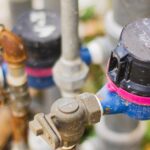At Kaiser Elevator, we encounter hydraulic elevator systems in a wide range of commercial properties, from busy urban offices to high-capacity mixed-use towers. One of the most persistent issues our service teams see is oil leakage in hydraulic elevators—a problem that’s often underestimated until it becomes a threat to safety, compliance, and operational uptime. As specialists deeply engaged in both preventative maintenance and modernization, we recognize that building owners and facility managers need more than surface-level tips. Let’s cut through the noise and address, step by step, how to prevent and proactively detect hydraulic elevator oil leaks to protect your investment and maintain a safe, clean environment for users.
Why Oil Leaks Matter in Commercial Hydraulic Elevators
Oil leaks are a red flag, not just an operational nuisance. Left unchecked, leaks can:
- Compromise rider safety by causing slip hazards in pits or machine rooms
- Trigger code violations and potential environmental fines for soil or water contamination
- Accelerate wear on components such as pumps and valves, compounding repair bills
- Lead to unpredictable downtime, disrupting building operations and tenant satisfaction
These cascading issues are especially critical for properties prioritizing uptime, image, and compliance, such as hospitals, hotels, and high-traffic office buildings.
Understanding the Root Causes of Hydraulic Oil Leaks
Based on decades of servicing elevators in New York and across the US, we know that the most common sources of hydraulic oil leaks include:
- Deteriorated Seals and Gaskets: These rubber or polymer components naturally degrade over time, especially in older systems or those exposed to temperature fluctuations and contaminants.
- Improper Maintenance Practices: Skipping regular inspections, neglecting fluid changes, or failing to check for system pressure imbalance is a recipe for premature seal failure.
- Poor Installation or Adjustments: Misalignment of pipes, over-tightened fittings, or using incompatible hydraulic fluid can stress components and create gaps, inviting leaks.
- Contaminated Hydraulic Oil: Dirt, water, or debris in the oil can erode seals and introduce blockages, causing backpressure and eventual leaks.
The Hidden Risks: Safety, Compliance, and Environmental Impact
Oil leakage presents occupational and environmental hazards that responsible building operators cannot ignore:
- Slip Hazards: Even minor leaks can create dangerously slick surfaces in machine rooms or elevator pits.
- Fire Risk: While elevator hydraulic oil is designed to minimize flammability, in enclosed spaces like pits, it can still present a fire hazard if exposed to electrical faults or open flames.
- Environmental Concerns: Leaked oil can seep into concrete, piping chases, or storm drains, especially if containment is inadequate—potentially resulting in fines and costly remediation.
- Code Compliance: Building codes and elevator safety standards strictly regulate leak management and pit cleanliness. Consistent leaks can result in failed inspections and forced shutdowns until remediated.
Proactive Prevention: Strategies That Work
We believe that prevention is always less costly than crisis repairs. Here’s how our team advises property managers to stay ahead of leaks:
1. Implement Routine, Thorough Inspections
Don’t rely on surface checks alone. Insist on regular, comprehensive servicing by certified technicians with a documented checklist. Key tasks should include:
- Visual inspection of valve blocks, piping, and cylinder base for wetness or pooling
- Checking oil level and assessing for discoloration (milky or dark oil often signals contamination or water ingress)
- Careful examination of pit and hoistway areas for evidence of repeated oil accumulation
- Pressure testing, if feasible, to ensure seals hold under load
2. Prioritize Quality Parts and Fluids
Not all replacement parts are created equal. We always specify OEM-grade or code-compliant seals and gaskets tailored to your exact elevator make and model. Using low-grade materials or generic oil may save pennies today but will cost you in accelerated wear and more frequent leaks.
3. Scheduled Oil Changes and Fluid Analysis
Hydraulic oil degrades and collects contaminants over time. Schedule oil changes proactively—usually annually or biannually, depending on traffic—and include laboratory oil analysis to detect early signs of contamination, water ingress, or breakdown that predict seal wear and leaks.
4. Staff Training and Awareness
Educate in-house building teams and cleaning staff to recognize signs of leaks—such as oil odors, wet spots, or oily footprints near machine rooms and pit access points. Early reporting stops small leaks from growing into bigger issues.
5. Maintain Clean, Dry Pits with Proper Containment
We strongly recommend installing pit liners and containment trays, especially in older buildings with porous floors or high water tables. These measures not only aid in leak detection but can help confine spill extent so you can respond efficiently.
Modern Detection Technologies: IoT and Beyond
While traditional visual checks are essential, we’re moving into an era where internet-connected (IoT) sensors can play a game-changing role in leak detection:
- Real-time Leak Monitoring: Sensors placed in elevator machine rooms and pits can alert your maintenance team instantly if moisture or oil is detected outside of containment, minimizing response times.
- Pressure & Oil Level Sensors: Advanced systems can track fluctuations, sending an alert if pressure drops or oil levels decrease unexpectedly.
- Integration with Smart Building Systems: Connect your elevator leak monitoring to your broader building management dashboard for centralized visibility—helpful for large properties, campuses, or portfolios.
Interested in how smart elevator technologies can further reduce risk and downtime? We recently published a detailed overview in Integrating Touchless Controls and IoT: How Smart Elevators Are Transforming User Experience and Building Value.
Early Leak Detection Techniques: Practical On-the-Ground Steps
For many properties, early leak identification still starts with boots-on-the-ground. Consider this routine:
- Daily/Weekly Walk-throughs: Assign a trained staff member to visually inspect elevator lobbies, machine rooms, and pits for new staining, smells, or pooling.
- Log Oil Top-offs: If you’re regularly topping off hydraulic oil, track the intervals and quantities—an uptick means a hidden leak, not just user volume.
- Check for Degradation: Oil that looks milky, foamy, or has metal flakes is a clear sign of contamination and likely internal wear. Prompt lab analysis can differentiate between seal breakdown and external contamination sources.
- Listen for Unusual Sounds: Gurgling, hissing, or excessive pump noise may signal air in lines or a pressure imbalance often associated with hidden leaks or failing seals.

Building Design Considerations to Support Leak Prevention
If you’re working on a new build or major modernization, your design phase is a golden opportunity for oil leak resilience:
- Specify easy-access pit hatches that allow for hassle-free inspections, cleanup, and repairs without excessive shutdowns
- Integrate high-capacity pit liners and oil-absorbent pads as part of the initial construction so that any unexpected leaks are contained right away
- Isolate elevator rooms from critical infrastructure (electrical, telecoms) to mitigate the impact of leaks spreading beyond the shaft area
Our engineering team incorporates these details into every value-engineered package we deliver, drawing on a deep understanding of code compliance and practical risk mitigation.
Maintenance Best Practices for Property Teams
Hydraulic elevators require more than just occasional service calls. At Kaiser Elevator, we structure our maintenance protocols to include:
- Monthly, quarterly, and annual inspection cycles
- Detailed checklists tailored to your specific elevator model and use environment
- Thorough documentation of all inspections, repairs, and oil changes for compliance and historical tracking
- Rapid response for any discovered leaks, including root cause analysis and permanent remediation—not just patch jobs
For a deeper dive on what should go into a comprehensive maintenance contract, see our guide: Elevator Maintenance Contracts: What Every Building Owner Should Know to Minimize Downtime and Cost.
How to Address a Leak When It Happens
No matter how diligent your program, leaks can still occur. Here’s how you should respond to minimize secondary damage:
- Isolate the affected elevator immediately if a significant leak is discovered to prevent further contamination and risk to users
- Notify your elevator service provider for urgent onsite evaluation—the faster the response, the less risk of major component damage or regulatory trouble
- Contain the spill using absorbent pads and pit liners if available
- Document everything: Take photos and keep detailed logs for insurance, code compliance, and future prevention analysis
- Request a full root-cause investigation to ensure repairs address the underlying issue, not just the symptom
Pro Tips from the Field: What Sets High-Performing Facilities Apart
- Emphasize a culture of reporting: Make it easy for anyone (including cleaning crews and security) to report suspected leaks promptly.
- Use technology, but don’t become complacent: Sensors and monitoring tools supplement—not replace—trained human observation and expert diagnosis.
- Track recurring issues: A pattern of leaks may indicate systemic issues, such as inappropriate hydraulic fluid, environmental factors (humidity, temperature fluctuations), or design/install flaws that need holistic review and possible modernization.
Summary: A Long-Term Partnership is Key
Oil leaks in hydraulic elevators aren’t just a maintenance inconvenience—they’re a litmus test of service culture, engineering foresight, and long-term asset stewardship. With thoughtful design, vigilant inspections, disciplined documentation, and smart integration of new technologies, property managers can sidestep costly surprises and uphold safety for everyone.
If you’re looking for clarity on maintenance programs that genuinely minimize leak risk or want to explore modernization solutions that reduce the chance of future incidents, reach out to us at Kaiser Elevator. We’re here to help you elevate safety, reliability, and compliance in your building’s vertical transportation—one detail at a time.

